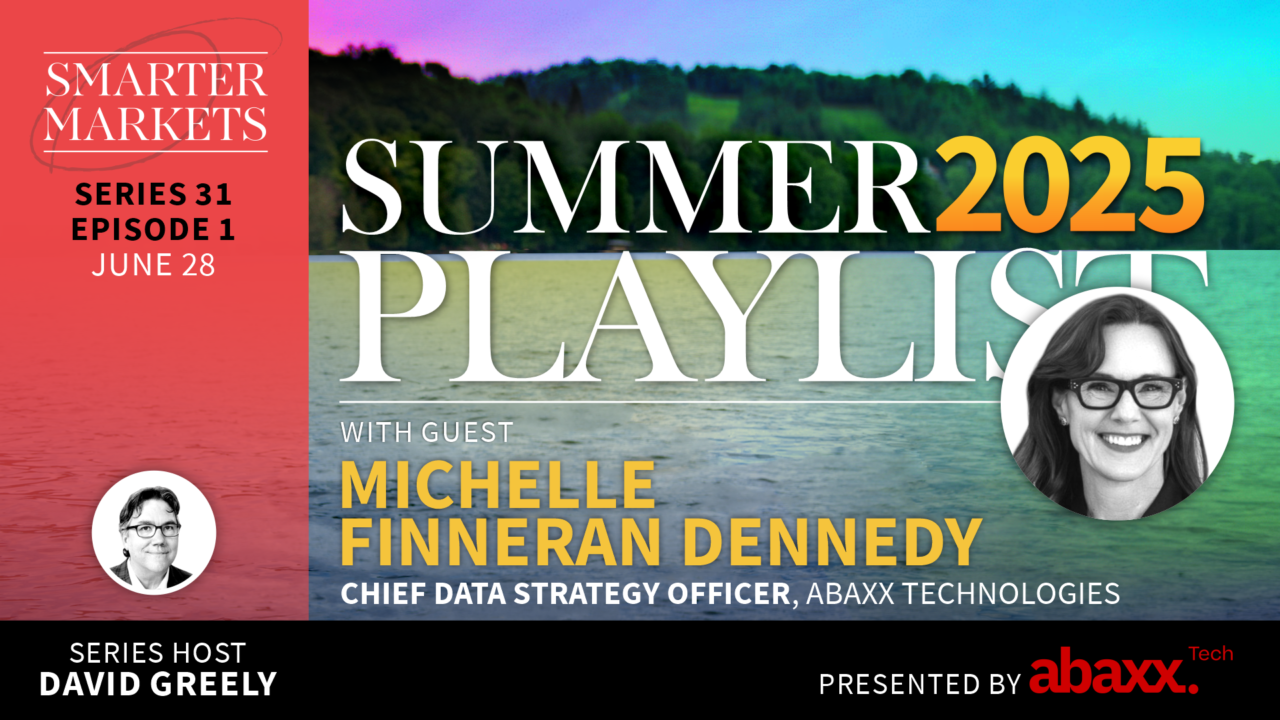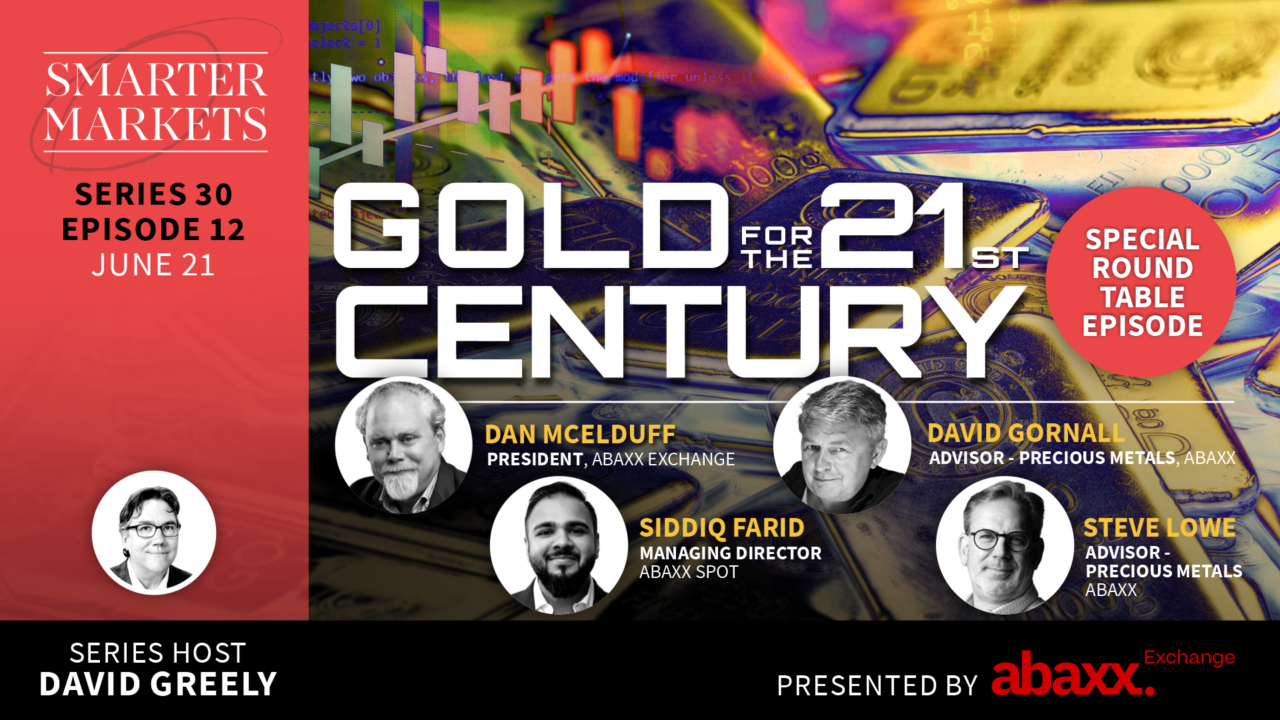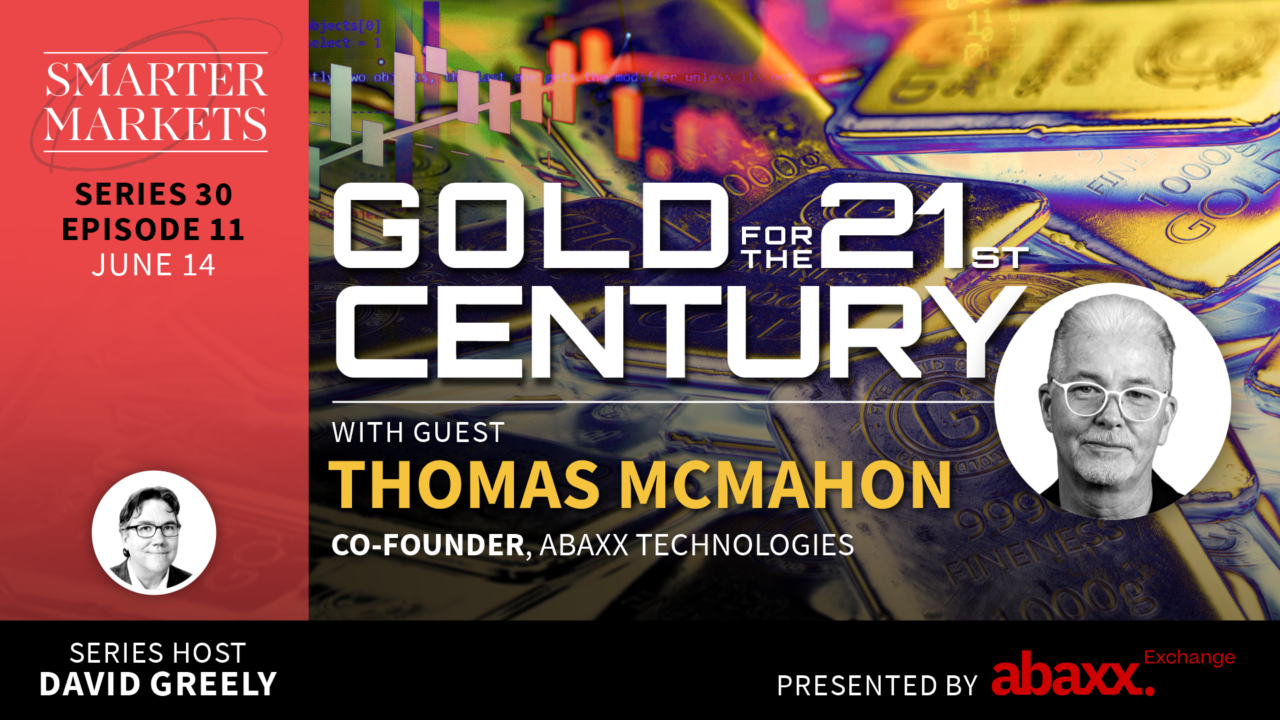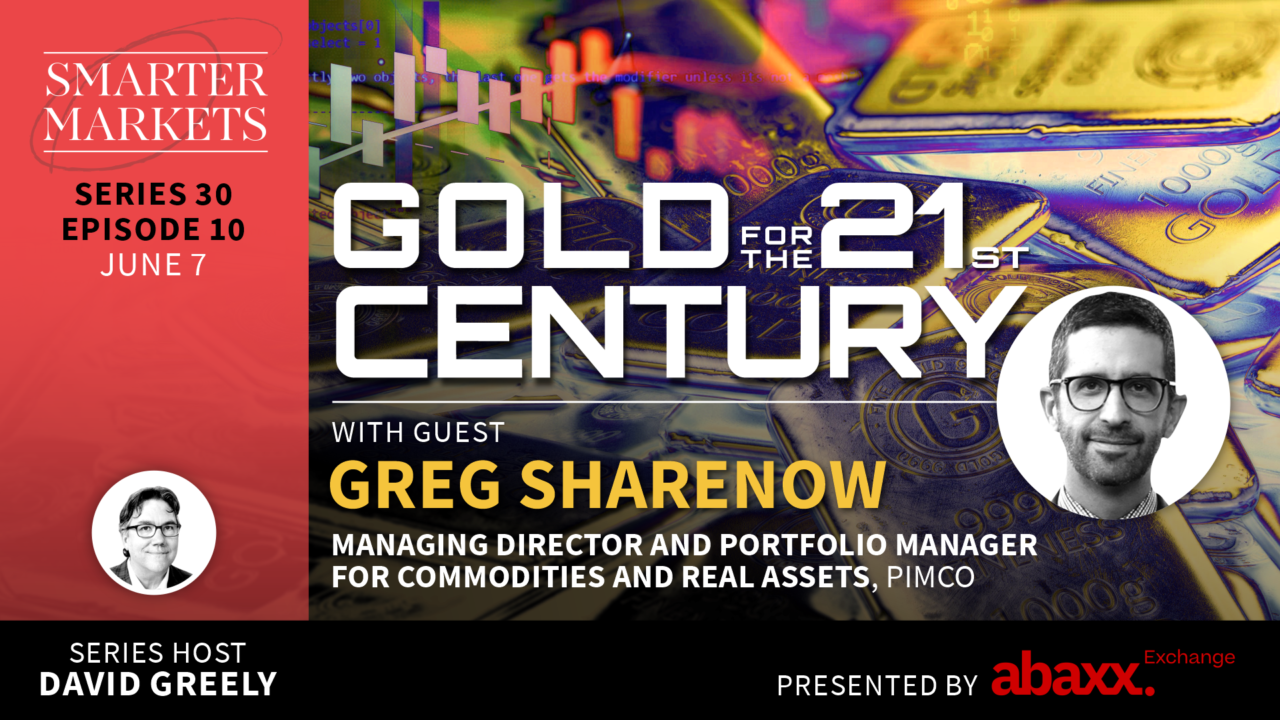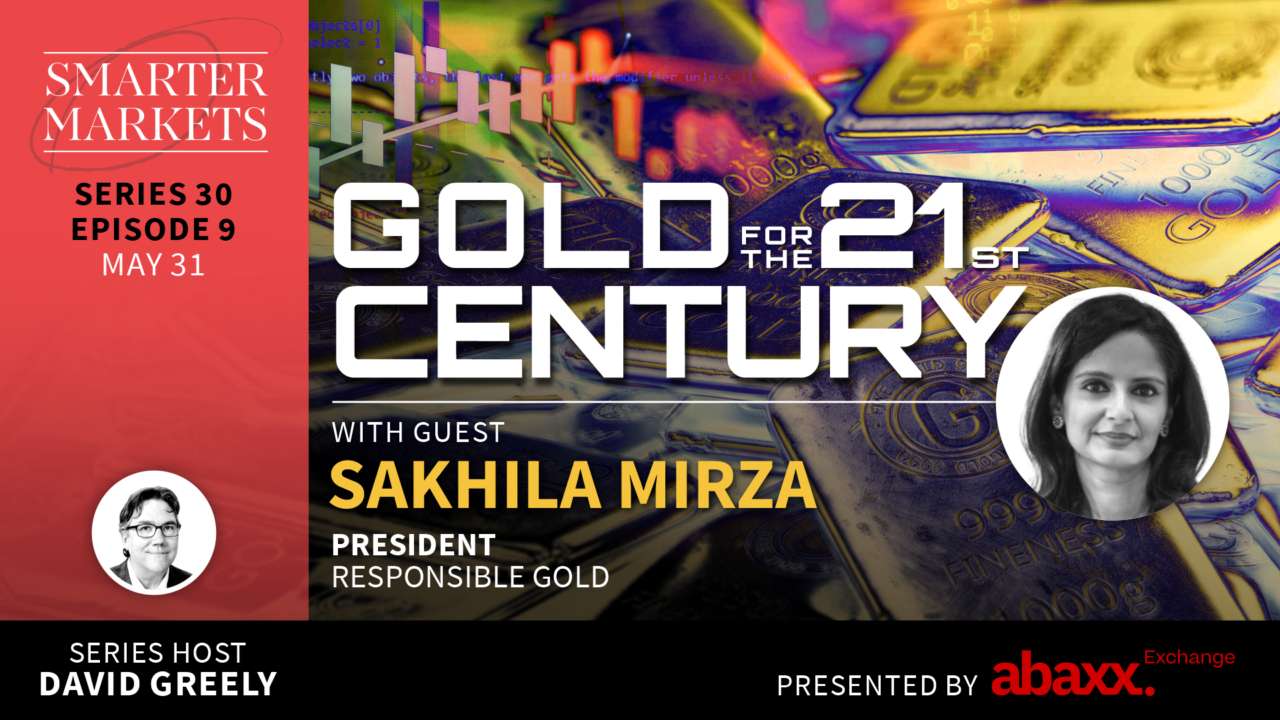We kick off our Summer Playlist 2025 this week with Michelle Finneran Dennedy, Chief Data Strategy Officer at Abaxx Technologies. David Greely sits down with Michelle to discuss why CEOs and organizational leaders are shifting how they view data from seeing it as a risky liability to potentially seeing it as their greatest asset – and what that means for the ways we measure and manage our businesses.
Hosted By
We close out Gold for the 21st Century this week with a special roundtable episode with Dan McElduff (President, Abaxx Exchange), Siddiq Farid (Managing Director, Abaxx Spot), and David Gornall and Steve Lowe (Strategic Advisors for Precious Metals, Abaxx).
David Greely sits down with them to discuss their experience and insights at the 2025 Asia Pacific Precious Metals Conference in Singapore this past week, following the introduction of Abaxx’s integrated gold infrastructure – including physically-deliverable Gold Kilobar Singapore Futures on Abaxx Exchange and the launch of a new provider of spot market services, Abaxx Spot, enabling secure transfers of physically-allocated gold in Singapore through a central pool structure. Together, they mark the first instance of co-located spot and futures infrastructure for gold, aiming to reduce fragmentation in global gold markets by aligning futures and spot markets with how gold is actually traded, stored, and settled.
Hosted By
We continue Gold for the 21st Century this week with Thomas McMahon, Co-Founder of Abaxx Technologies. David Greely sits down with Thomas to discuss how the role that gold may play in our financial system in the near future is not that different from the one gold and silver played in the not-so-distant past. They also explore precious metals’ market evolution in the latter half of the 20th century and its implications for the role of gold in the 21st century.
Hosted By
This week on Gold for the 21st Century, we welcome Greg Sharenow back into the SmarterMarkets™ studio. Greg is Managing Director & Portfolio Manager for Commodities and Real Assets at PIMCO. David Greely sits down with Greg to discuss how policy uncertainty and inflation are shaping the investing landscape and the role that commodities and real assets – including gold – are playing in helping investors grow and protect their wealth.
Hosted By
We continue Gold for the 21st Century this week with Sakhila Mirza, President of Responsible Gold. David Greely sits down with Sakhila to discuss the role of standards, data, and technology in building an ecosystem of trust for responsible and sustainable gold.
Hosted By
